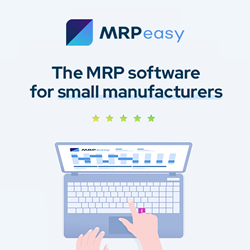In the final article of this series, we highlight the three business valuation approaches, as well as the level of value adjustments, and provide a final summary of what manufacturers need to know about business valuation.
Decoding Business Valuation: What Manufacturers Need to Know (Part 4)
Chuck Faunce | Gorfine, Schiller & Gardyn
In the final article of this series, we highlight the three business valuation approaches, as well as the level of value adjustments, and provide a final summary of what manufacturers need to know about business valuation. Here are part one, part two and part three of this series.
The Three Valuation Approaches
In the third step of the valuation process, the data obtained from the micro and macro economic analyses are considered in the context of the three generally recognized approaches to business valuation, which are the Asset Approach, the Income Approach, and the Market Approach.
The Asset Approach is generally not applicable to profitable operating companies and is used more for holding companies such as a stock portfolio or real estate held by a family. As such, this approach typically would not be applicable to a manufacturing company. Instead, profitable manufacturers would most likely be valued using the Income and Market Approaches.
The two methods under the Income Approach are the capitalized cash flow (if growth is expected to be constant) and discounted cash flow (if growth is not expected to be constant) methods. The two methods under the Market Approach, are the “guideline public companies” and “comparable company transactions” methods, both of which should typically be considered.
The “guideline public companies” method considers the market price of stocks of public companies. High quality data for this method are widely available, but for companies that may be much larger than the subject private company. On the other hand, the “comparable company transactions” method considers the market price of whole companies, both public and private. The transactions are more likely to include companies that are closer in size to the subject company, but the data are voluntarily reported through various private services and is not as robust.
Level of Value Adjustments
The value of the subject interest is influenced by the extent to which it can or cannot control or influence the management and policies of a business as well as how easy or difficult it is for potential buyers and sellers to find each other. The ability to exercise control over a business has value, and the presence of an active market to buy and sell something has value. Conversely, lack of control or marketability may reduce value. The issues of control and marketability collectively reflect the “level of value.”
The results from the three different approaches may each reflect different levels of value than that which is inherent in the subject interest. Therefore, the results from the three approaches are adjusted as required to make them all consistent with the control and marketability characteristics of the subject interest.
Synthesis
After making adjustments for control and marketability, the last step in the process is to weigh the result of each method to come to an estimate of value. While there’s no completely objective way to weigh the results, a good way is to consider the range of values produced. A smaller range supports the conclusion that each method is reliable and provides credible results. A wider range may imply that at least one of the indications of value may be unreliable. This provides less affirmation, which makes it harder to determine the credibility of the result.
It’s important to decode what a business valuation tells you by understanding the myriad differences between the actual historical results provided by accounting financial statements and the expected future results necessary to determine the value of a manufacturing business because you don’t want to leave any money on the table.
.JPG)
Chuck Faunce is the Director Business Valuation & Litigation Support at Gorfine, Schiller & Gardyn. He has more than 20 years of experience providing manufacturing clients with valuation consulting services including financial and tax compliance reporting, economic damages analysis and expert testimony, and buy and sell side transaction analysis. To learn more about Gorfine, Schiller & Gardyn, please click here.
The content & opinions in this article are the author’s and do not necessarily represent the views of ManufacturingTomorrow
Comments (0)
This post does not have any comments. Be the first to leave a comment below.
Featured Product

